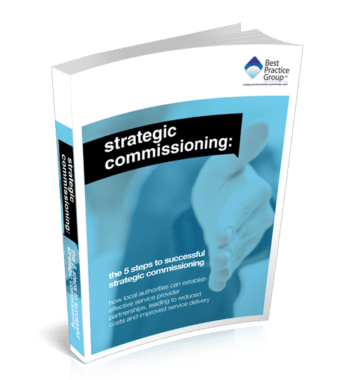 “How do you know when to start a critical project?” As ‘timing’ can be crucial to the success of a project, it’s surprising that our experience evidences that it’s a skill not many organisations have mastered. If you begin a project too soon, there’s a good chance it will miss the mark – equally, leave it too long and you could miss a great opportunity.
“How do you know when to start a critical project?” As ‘timing’ can be crucial to the success of a project, it’s surprising that our experience evidences that it’s a skill not many organisations have mastered. If you begin a project too soon, there’s a good chance it will miss the mark – equally, leave it too long and you could miss a great opportunity.
Timing is about readiness. Readiness of key stakeholders within your organisation to stand behind the idea, readiness of finance and resources, whether appropriate resources are available in the quantities to see you through to the other side of the project, and of your preparedness to move forward.
For most of this there is actually a formula for determining your readiness, though there is still one factor that you cannot prepare for, and that’s the readiness of the market/users for your solution, as sometimes this is a challenge for even the most skilled innovators to get right.
A prime example of this is Google Glass. Gigantic innovator Google released this product on April 15th 2013 but, despite bold marketing efforts, just two years later the project was mothballed. The timing was off; people were just not ready for the product, and personal privacy issues provoked a backlash.
A successful example of timing revisited is the Apple iPhone. Proposed to Steve Jobs back in 2001, he rejected it because the company was primarily focused on iTunes and he believed he couldn’t spare the resources. It wasn’t until 2004, three years later, that Apple formally established the project that resulted in the product that was to drive much of the company’s success for the next decade and beyond.
When to start a critical project? A scientific approach
While some will go on ‘gut instinct’ and others will call on years of experience to estimate readiness, there is a scientific process called the ‘The S-curve framework‘ which can be used to calculate the optimal time to start your project.
Popularised in the early 1960s by E.M. Rogers in his book Diffusion of Innovations, this theory has been used in fields as diverse as rural sociology, knowledge management and marketing to determine the way new ideas/products are adopted and spread through communities, audiences or populations.
The S-curve model has been used to represent a learning curve for students, a profitability curve for a growing business as well as the evolution of a project from concept to completion. It simply represents the natural process of preparation, escalating action, plateauing before reinvigoration for the final push.
On top of assisting in the decision-making process as to when to launch into a project, the theory also looks to determine the point at which a new idea/product achieves critical mass, where the market generates enough pull for a company to ease back on the push required to start that momentum.
Factors that impact the curve include the relative advantage that a solution/product has over others in the market, ease of compatibility, complexity, breadth of usability and evidenced benefits, the communication channels used to both disseminate the message and share results, the amount of time that passes for public opinion to form and how society reacts and smooths the adoption process or creates friction.
The S-curve can help decision-makers envision when it’s the right time to initiate a project and thereafter model its progress.
For an organisation that is exploring an idea and the possibility of a project to bring that idea to fruition, the base of the curve represents a period of exploratory due diligence. The purpose of this phase is to ascertain whether there is really an opportunity in an idea – or not.
When to start a critical project? 6 steps to get it right
During this phase you should seek answers to six important and foundational questions:
- Has the project been explored before? This is a question of uniqueness, but also one of avoiding duplication of efforts. Before jumping in, it’s firstly important to determine whether there is an interest in this proposed project or service. Clever ideas are not always popular ideas. To find out the possible level of interest, explore what problems it will solve and whether those problems actually require a solution. If they do, the next thing to determine is whether you have any other initiatives currently running that solve this same problem. Alternatively, whether any exist which may be broadened to incorporate a resolution to the problem you wish to solve? Separately, is there something different about your project proposal that might enhance someone else’s project and add material value? The uniqueness and the value proposition of your project may well be considerations to factor into your decision as to whether now is the right moment to move forward, especially when there are time-sensitivities surrounding them.
- Is the project part of your main business and will it leverage your strengths? Great leaps and small iterative innovations require very different schedules. The further from your core business the project will take you, the more time you’ll need to spend exploring due diligence around the idea (at the bottom end of your S-curve framework). Also, consider how many projects you’re already involved in that take place outside of your main business. Too many will put too much pressure on available resources. Some leading organisations maintain a healthy split of 60% invested in projects that further the goals of their main company and 30% invested in neighbouring initiatives they may be expanding into, with the final 10% invested in far-off explorations.
- Can you clearly define the scope? Do you know what outcomes the project is expected to produce and are you able to draw an accurate timeline for the completion of all necessary tasks? How many of the ultimate requirements do you know (0%–100%)? If you do not have enough clarity on either your schedule or your goals, it would normally be unwise to continue. Crystal, calculatable clarity on all aspects of your vision and outcomes, a true understanding of what you are looking to achieve and why, is vital before you get started.
- What will the investment cost? This includes determining what resources will be required – financial, human, expertise, management time – and verifying whether they are available in-house or will have to be sourced externally. Is this something you can and want to commit to? Projects often turn out to be more costly than planned with resources and management time tied up for the long term and the ever-present risk of the project not achieving its stated goals, it’s important to be certain that the investment is both fully calculated and worthwhile. It’s also important to clarify before starting the project who is going to pay for it, as well as ensuring that all relevant in-house parties are committed to supporting it. These are all important decisions to be considered at the lower end of the S-curve.
- Do you have buy-in from key leaders and the wider organisation? Excellent ideas and brilliant projects often fail due to lack of buy-in from vital stakeholders. The exploration phase should consolidate meaningful momentum around the project, increasing its potential for success. Are you obtaining buy-in from essential stakeholders? Do they seem invested in the idea? If a positive institutional will is present, all other necessary resources are likely to follow. In the S-curve framework theory, the people you hope will adopt the idea, support the project or buy the product are categorised as Innovators (risktakers who are the first to back the concept), Early Adopters (they have a lower propensity towards risk, but are in early, supporting you in greater numbers to start the momentum rolling), Early Majority (this is where critical mass is often created as the leaders who went before are the social proof these people need to start to follow on with their support), Late Majority (those for whom time and evidence of value were likely the conversion mechanism), and Laggers (those late to the party, but welcome nonetheless). The Innovators are likely to be your inner circle and adjacent, so it’s the Early Adopters who help you determine whether your project has the right stuff and Early Majority who explore how valid the initiative is proving in day-to-day operation.
- What is the timeline? Move too quickly without all of the correct planning and due diligence and your project is likely to fail. However, if you establish carefully determined milestones and timelines for reaching important benchmarks you have a far greater chance of success. Tight deadlines can focus groups, so use them wisely when appropriate. But, always be wary of empty deadlines as a lack of accountability risks spreading complacency to everyone engaged on a project.
Conclusion
It can be tempting to jump the gun and get started on a project far too soon, before the will, the plan and the resources are available. This can be further exacerbated when pressure from above forces you to make decisions based on anything other than the very best evidenced determinations.
No matter how critical a project may be, the right time to get started is always after resources have been identified, and validation exists that people can be placed in appropriate positions, objectives have been identified and a time frame for completion has been determined. Once these requirements have been fulfilled, the project can move forward far more confidently and quickly than it would have done otherwise.

